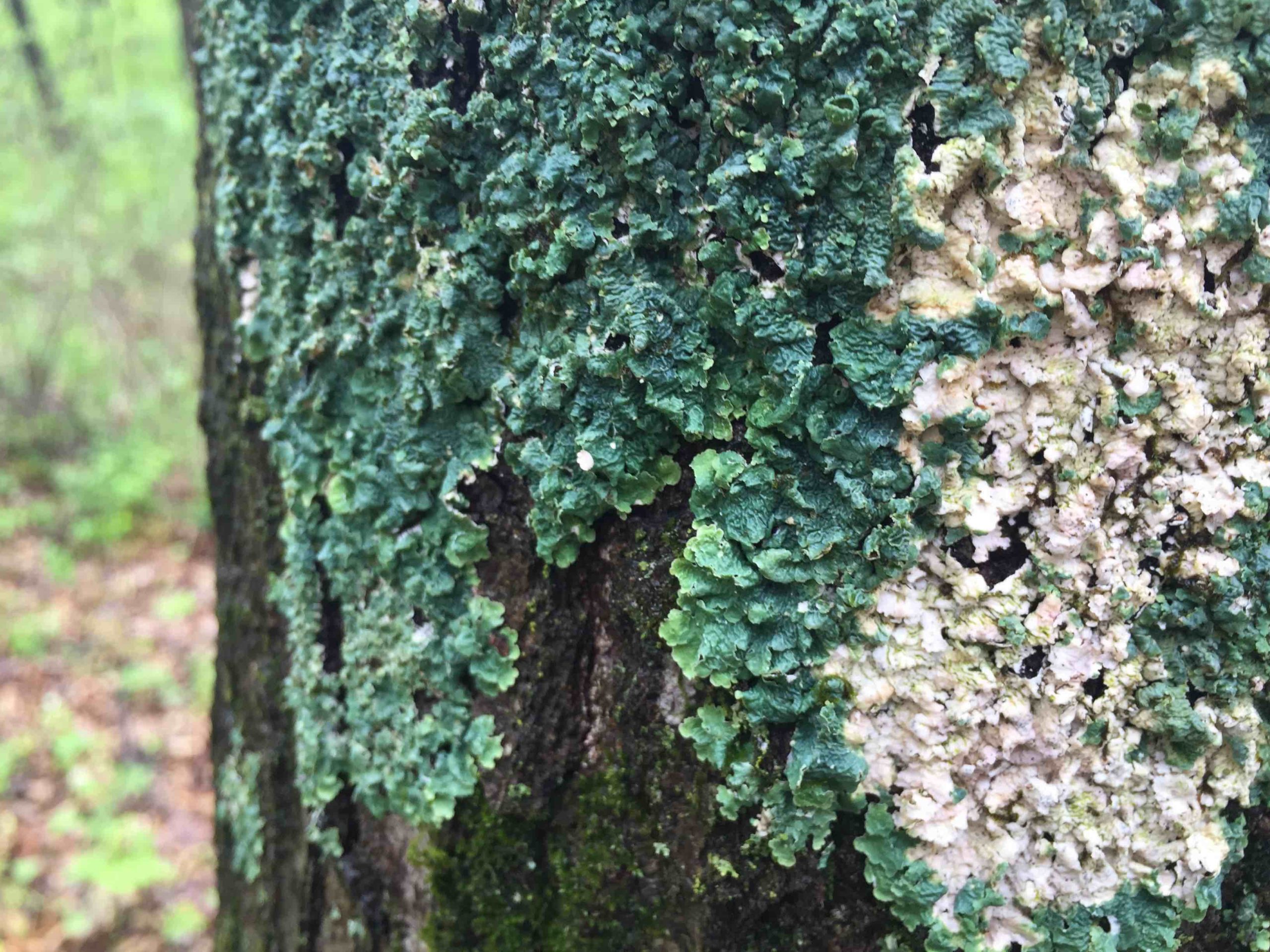By Rosalie Robison
“There is a low mist in the woods—
It is a good day to study lichens.”
― Henry David Thoreau, A Year in Thoreau’s Journal: 1851
Lichen is life in its most basic form: the precursor to soil and higher plant forms.
Lichen arrived on Earth at least 250 million years ago and consists of a fungus and an alga (or sometimes a cyanobacterium) that live together in symbiosis. It has no roots, no flowers or leaves, no fruits, and no seeds but is life in its most basic form: a soil builder along with aerobic and anaerobic bacteria, earthworms, and fungi molds. Even though lichens cover only 7% of the planet’s surface, we have much to learn about them. They are interesting for several reasons:
- they are composed of two organisms in a symbiotic relationship;
- they build soil;
- they indicate air quality; and
- they have human, animal, and insect uses.
Many lichens look like and are referred to as moss even though lichens do not contain moss nor are they related to moss. A common example is Cretaria islandica or Iceland moss, which grows in grass and moss in northern and central Europe, North America, and Siberia.

Botanical Characteristics
Because they get their moisture from the air, lichens are very dependent on air humidity, and the underlying soil moisture is not as important as it is to vascular plants. They are better adapted to cold climates than any other life form and they live in some of the most extreme environments on Earth.
They are, however, highly flammable under dry conditions because they desiccate as soon as the humidity drops. Lichens often act as a point of ignition in woodlands and tundra, spreading fire. Dry lichens resemble dead litter more than live tissue. Continuous lichen mats present an uninterrupted surface along which fire spreads.
The slow growth rates of ground lichens are widely recognized and can be less than 1-2 millimeters per year. In Iceland and Sweden, lichens are commercially harvested. Up to 600 pounds are sold each year in Sweden.
Lichen varies in color from bright reds, oranges, and yellows to deep browns, greens, and grayish white, and they can change color depending on moisture. Lichen can camouflage; for example, hummingbirds cover their nests with lichen to hide them.

Two Organisms in a Symbiotic Relationship
The fungus and alga each serve a role in the relationship. How does this work? The fungus absorbs and conserves moisture which the alga uses to grow. Meanwhile, the alga shares its food with the fungus so it can survive in deserts or sub-zero climates. Together, they become something that neither organism could be alone.
Soil Builders
Lichens are pioneer species, active in the initial stages of soil formation. Lichen builds soil by building leaf mold from rock atmospheric gases and algae through the process of photosynthesis. The lichen dies and adds to the green manure of already formed soil. Initially, it is in a crust form but becomes leafy. In addition, snails, mites, and caterpillars eat lichen which supplies manure for soil making.
Lichens are pioneer plants because they are dependent on air moisture rather than soil moisture and can tolerate shallow soils. They can persist in environments too harsh for higher plants. Northern boreal forests offer climatically optimal conditions for lichen growth because of slow plant succession and little competition from other plant forms.
Air Quality Indicators
Lichens are also common indicators of air pollution or air quality. Their sensitivity to sulfur dioxide and fluoride makes them useful as an indicator of high concentrations of these chemicals. Lichens can also absorb radioactive fallout.

Human, Animal, and Insect Uses
Lichens are a source of food for humans and animals as well as for insect shelter and nesting. For example, ground lichens provide the major bulk of the winter diet of woodland caribou. Iceland moss was traditionally eaten powdered in breads, soups, cereals, jellies, and salads, and various lichens have applications in dyes, perfumes, hair tonics, soaps, and cold creams. Medicinally, lichen contains antibacterial and antiviral properties, is an antibiotic, and is used for ailments as a narcotic and insecticide.
“I thought the earth remembered me,
she took me back so tenderly,
arranging her dark skirts, her pockets
full of lichens and seeds.
I slept as never before, a stone on the river bed,
nothing between me and the white fire of the stars
but my thoughts, and they floated light as moths
among the branches of the perfect trees.
All night I heard the small kingdoms
breathing around me, the insects,
and the birds who do their work in the darkness.
All night I rose and fell, as if in water,
grappling with a luminous doom. By morning
I had vanished at least a dozen times
into something better.”
~Mary Oliver, “Sleeping in the Forest”

You can grow lichen yourself. Use a knife to scrape some from trees or rocks and let it dry in the sun. Crumble and rub it on a rock surface, then add water and a new batch of lichen will start.
Sources
A Modern Herbal, Vol. II. M. Grieve
Plantlife-online webarchive
USDA Species: Cetraria Islandica
Health Plants of the World-Atlas Medicinal Plants
Encyclopedia of Organic Gardening. F. L. Rodale, Ed.
Britannia Encyclopedia



Well done. You found extra photos.